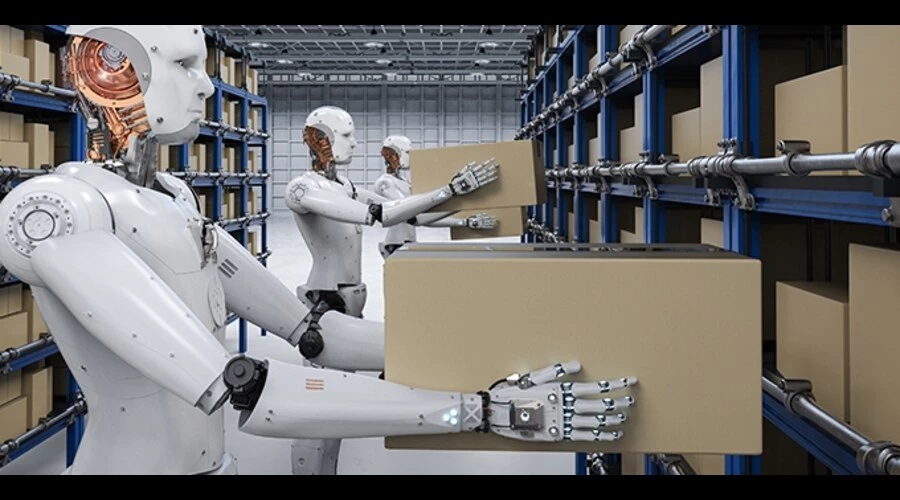
In light of the expansive growth of electronic commerce, warehouse robotics have aptly emerged as a pivotal component within retail. As customers demand rapid shipping times, warehouses have evolved into giant operations that require considerable space and efficacy. A developing solution to this exponential growth is automated warehouse systems, which increase productivity, optimize space usage, and alleviate labor pressure when integrated with human effort. This convergence ensures that warehouse capacity can be maximized while human resources are diverted to crucial facets like customer service and quality control. This article will explore the top ten trends in warehouse automation that you should watch in the coming days.
Cloud-Based Warehouse Management System (CWMS): Cloud-based solutions have revolutionized warehouse management by providing a streamlined platform for improving inventory management and communications. These solutions eliminate challenges associated with IT integration, financial constraints, and scalability issues, thanks to their high levels of interoperability and a flexible SaaS-based operating system. CWMS also makes it easier for warehouse management to carry out critical functions of daily warehouse operations without extensive technical knowledge or expertise.
Mobile Robots as a Service (RaaS): Raas, which stands for "Robots as a Service," is a rental subscription service that enables warehouses to lease autonomous mobile robots (AMRs). By renting robots as needed rather than purchasing them outright, warehouse robotics can benefit financially and operationally. With the RaaS mechanism, warehouses can use best-in-breed multi-robot machines with minimal initial investment (CapEx) as expenses become operational expenses (OpEx). This approach enables more straightforward scaling, as adding or updating necessary robots is more feasible through a subscription service.
Automated Storage and Retrieval Systems (ASRS): Computer-controlled automated storage systems are designed to store inventory efficiently and compactly, retrieving merchandise when required. These systems enable warehouses to optimize space utilization both vertically and horizontally. Vertical storage capabilities can be maximized by extending storage to heights beyond human reach. Additionally, ASRS warehouse systems' small dimensions allow for spacing storage shelving to be placed closer together, enabling warehouses to utilize more floor space.
Internet of Things (IoT): The Internet of Things (IoT) is a network of interconnected things that, thanks to embedded sensors, can gather and exchange data in real time. In supply chain and inventory management, each item to be tracked is assigned an RFID tag, providing critical data for making informed decisions. IoT technology can be used across the entire global supply chain, improving communication between suppliers and customers. In warehouse management, IoT solutions offer end-to-end visibility into the supply chain process, from order placement to shipment delivery or third-party logistics warehouses, allowing for better monitoring and optimization of warehouse operations.
Big Data Integration in Warehousing: Warehouse robotics generate vast amounts of data, which requires analytics to make sense of it. Big Data refers to datasets of immense size that go beyond what is typically used to manage and process data in a single company. Big Data Analytics enables warehouses to monitor and track inventory throughout the supply chain. Analyzing large datasets also helps supply chain leaders make informed decisions based on accurate projections.
Collaborative Robots (COBOTS): COBOTs, or collaborative robots, are designed to work alongside humans, directly interacting with them. They are used for automation and for completing monotonous, physically demanding, complex, or hazardous tasks. Cobots are flexible and easily programmable, making them ideal for working in tandem with human employees. Typically, they are used for inspection and picking, allowing human workers to focus on tasks that require problem-solving skills. Automated guided vehicles are another example of cobots, which enable workers to improve their efficiency and productivity.
Voice Picking System: Voice-directed warehousing, also known as pick-by-voice, is an order fulfillment process that utilizes voice commands to communicate with warehouse workers. This paperless system often has a multi-language capability for common languages. Voice-picking systems improve productivity by reducing errors and increasing efficiency.
Wearable Tech for a Warehouse: Wearable technology refers to tiny computers that warehouse workers can attach to their wrists, heads, or other body parts. It helps warehouse workers free up their hands, which enhances speed and accuracy. These wearable devices are connected to cloud-based technology, enabling the data they generate to be immediately uploaded, improving inventory and order fulfillment accuracy.
Bright Layout Plan: The layout of automated warehouse systems comprises its interior and exterior design. Automated shelving technology allows warehouses to manage inventory and data flow more efficiently. A well-planned layout is essential for warehouses to scale and adapt to the increasing demands of their operations.
Drones in Warehouse Automation: Although typically associated with outdoor use, drones are becoming more common in warehouse automation. They can be used for tasks such as scanning pallets and counting inventory by flying around the warehouse. These drones are connected to cloud-based warehouse management systems, allowing them to upload the data they collect instantly. Some drones used in warehouses can scan up to 200-400 pallets per hour.
To meet the demands of an ever-growing e-commerce market, warehouse management must find automation solutions that are both effective and cost-efficient. Here, 13SQFT can help you by providing multiple types of automation on a shelf that will be best suitable for your operation and helps to boost your performance in the supply chain.
POSTED BY
Team 13SQFT